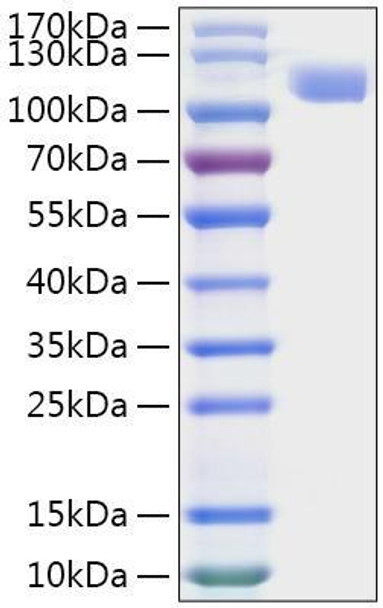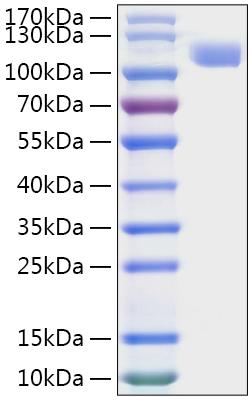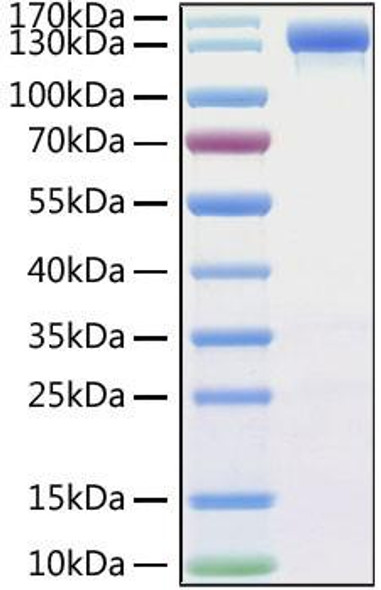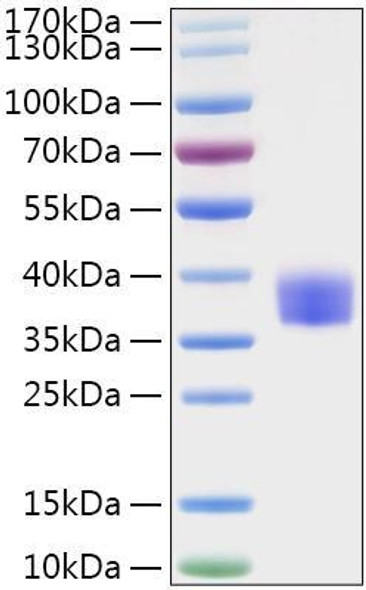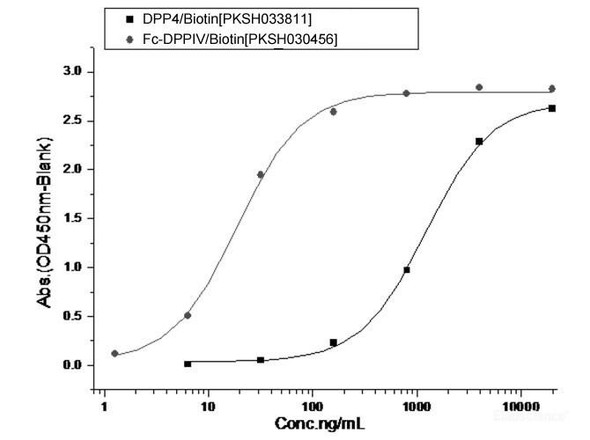Description
Recombinant MERS-CoV Spike S1 Protein
The Recombinant MERS-CoV Spike S1 Protein is a high-quality recombinant protein produced for advanced research applications in molecular biology and biotechnology. This protein serves as a critical reagent in various experimental contexts, including functional studies, binding assays, and therapeutic development programs, providing researchers with a standardized and reliable tool for investigating protein function and interactions.
This product (SKU: RPCB0869) is produced using HEK293 cells and features a C-His tag for convenient detection and purification. The protein exhibits a calculated molecular weight of 79.35 kDa with an observed molecular weight of 100-130 kDa under denaturing conditions, achieving ≥ 95 % as determined by SDS-PAGE., ensuring exceptional quality and consistency for research applications.
Key Features
| High Purity by Affinity Chromatography | |
| Mammalian & Bacterial Expression Systems | |
| High lot-to-lot consistency via strict QC |
| Product Name: | Recombinant MERS-CoV Spike S1 Protein |
| SKU: | RPCB0869 |
| Size: | 10 μg , 50 μg , 100 μg |
| Reactivity: | MERS-CoV |
| Synonyms: | MERS-CoV Spike RBD |
| Tag: | C-His |
| Expression Host: | HEK293 cells |
| Calculated MW: | 79.35 kDa |
| Observed MW: | 100-130 kDa |
| Gene ID: | 14254594 |
| Protein Description: | High quality, high purity and low endotoxin recombinant Recombinant MERS-CoV Spike S1 Protein (RPCB0869), tested reactivity in HEK293 cells and has been validated in SDS-PAGE.100% guaranteed. |
| Endotoxin: | < 0.1 EU/μg of the protein by LAL method. |
| Purity: | ≥ 95 % as determined by SDS-PAGE. |
| Formulation: | Lyophilized from a 0.22 μm filtered solution of PBS, pH 7.4. |
| Reconstitution: | Centrifuge the vial before opening. Reconstitute to a concentration of 0.1-0.5 mg/mL in sterile distilled water. Avoid vortex or vigorously pipetting the protein. For long term storage, it is recommended to add a carrier protein or stablizer (e.g. 0.1% BSA, 5% HSA, 10% FBS or 5% Trehalose), and aliquot the reconstituted protein solution to minimize free-thaw cycles. |
| Storage: | Store at -20℃.Store the lyophilized protein at -20℃ to -80 ℃ up to 1 year from the date of receipt. After reconstitution, the protein solution is stable at -20℃ for 3 months, at 2-8℃ for up to 1 week. |
The spike (S) glycoprotein of coronaviruses contains protrusions that will only bind to certain receptors on the host cell. Known receptors bind S1 are ACE2, angiotensin-converting enzyme 2; DPP4, dipeptidyl peptidase-4; APN, aminopeptidase N; CEACAM, carcinoembryonic antigen-related cell adhesion molecule 1; Sia, sialic acid; O-ac Sia, O-acetylated sialic acid. The spike is essential for both host specificity and viral infectivity. The term 'peplomer' is typically used to refer to a grouping of heterologous proteins on the virus surface that function together. The spike (S) glycoprotein of coronaviruses is known to be essential in the binding of the virus to the host cell at the advent of the infection process. It's been reported that SARS-CoV-2 (COVID-19 coronavirus, 2019-nCoV) can infect the human respiratory epithelial cells through interaction with the human ACE2 receptor. The spike protein is a large type I transmembrane protein containing two subunits, S1 and S2. S1 mainly contains a receptor binding domain (RBD), which is responsible for recognizing the cell surface receptor. S2 contains basic elements needed for the membrane fusion. The S protein plays key parts in the induction of neutralizing-antibody and T-cell responses, as well as protective immunity. The main functions for the Spike protein are summarized as: Mediate receptor binding and membrane fusion; Defines the range of the hosts and specificity of the virus; Main component to bind with the neutralizing antibody; Key target for vaccine design; Can be transmitted between different hosts through gene recombination or mutation of the receptor binding domain (RBD), leading to a higher mortality rate.

